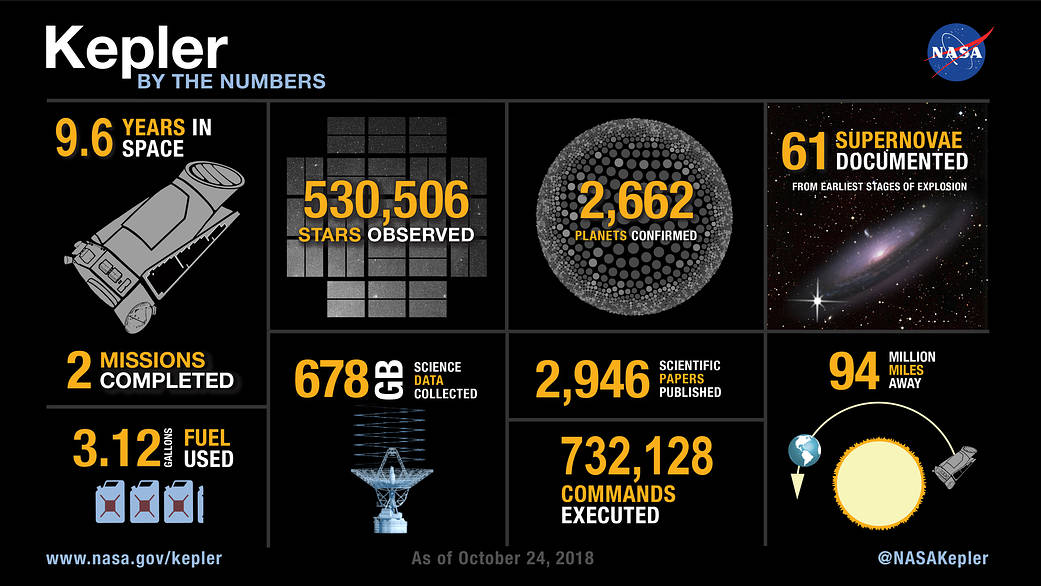- On November 15 evening, NASA’s Kepler space telescope received its final set of commands to disconnect communications with Earth. The “goodnight” commands finalize the spacecraft’s transition into retirement, which began on Oct. 30 with NASA’s announcement that Kepler had run out of fuel and could no longer conduct science.
- Coincidentally, Kepler’s “goodnight” coincides with the anniversary of the death of its namesake, German astronomer Johannes Kepler, who discovered the laws of planetary motion and died 388 years ago on Nov. 15, 1630.
- The data Kepler collected over the course of more than nine years in operation will be mined for exciting discoveries for many years to come.
- The Delta II rocket carrying NASA’s Kepler spacecraft was lifted off on March 6, 2009 from Launch Complex 17-B at Cape Canaveral Air Force Station in Florida.
- In the 9.6 years in space, Kepler spacecraft completed two missions, observed 5,30,506 stars, discovered 2,662 planets, documented 61 supernovae and helped scientists collect 678 GB of science data.
KEPLER’S ACHIEVEMENTS SHOWN BY NASA



